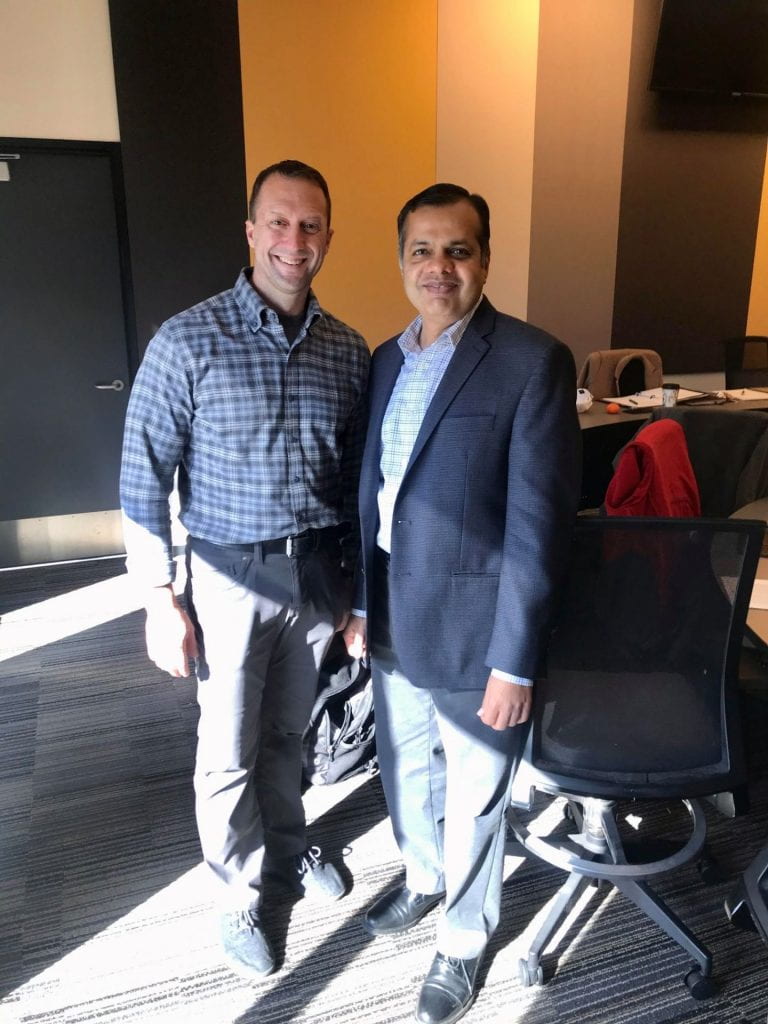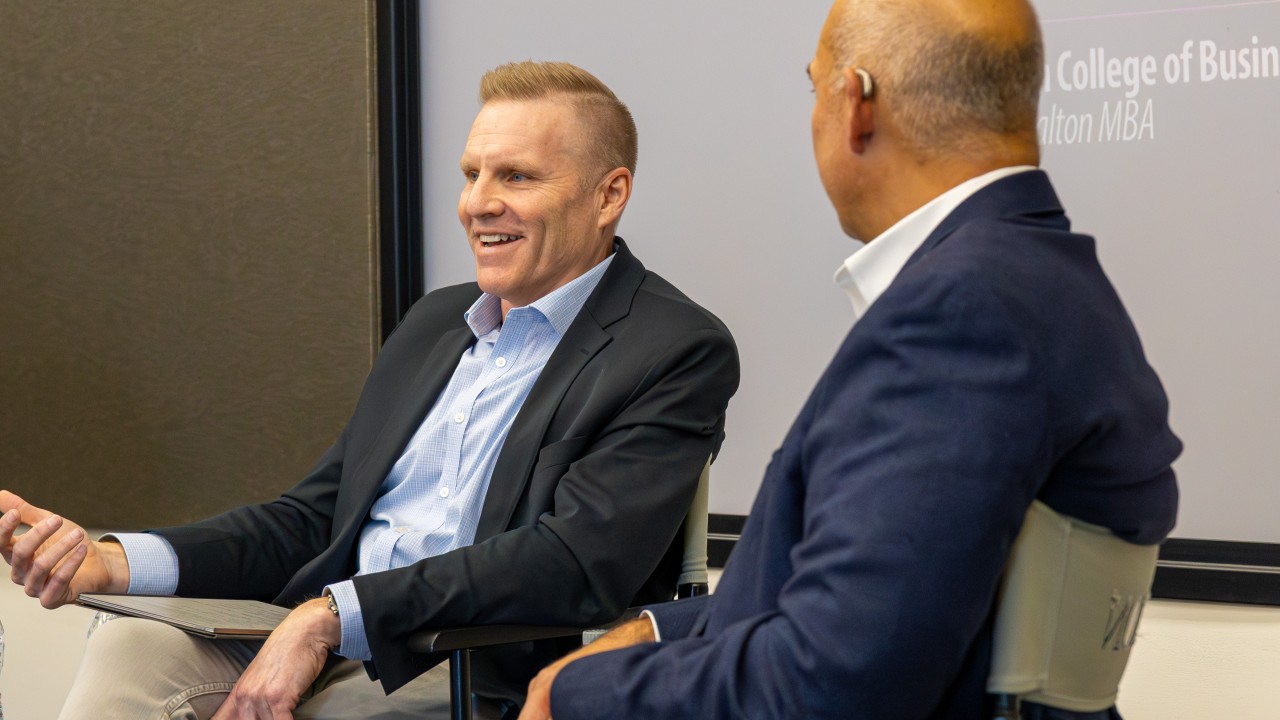
Daniel Eckert, former senior vice president of Walmart Services and Digital Acceleration, says customers are changing how, where and when they shop, and a harmonized commerce ecosystem—the seamless integration of physical and digital retail environments—will win the future of retail.
Total global retail sales reached $20.31 trillion in 2018 and were expected to grow another 3.4 percent by the end of 2019. In the United States, e-commerce sales increased 14.9 percent between 2018 and 2019—accounting for 12.8 percent ($601.7 billion) of total U.S. retail sales. New technologies are driving a digital revolution in U.S. retail and the payout for brick and mortar retailers that can develop strong e-commerce and online markets is growing.
“To win the future of retail you will have to constantly innovate to meet the customers’ changing expectation for a modern retail experience.”
—Daniel Eckert, former SVP Walmart Services & Digital Acceleration
Brief History of Digital Retail at Walmart
Walmart made major investments in technology and automation in the 1970s, introducing computer systems and electronic scanning codes to improve inventory systems, customer experiences and communication between stores and distribution centers. In 1987, Walmart made a $24 million investment in satellite network and data mining initiatives. In 1994, Amazon, established as an online bookstore, created a new competitive digital landscape for the brick and mortar retail giant.
In 2011, Walmart diversified their online merchandise—adding groceries to walmart.com and earning almost $8 billion in online sales revenue; online sales at Amazon were significantly higher, valued at $60 billion. A rise in e-commerce and competition from Amazon spurred debates on the viability of brick and mortar retail. Walmart opened e-commerce divisions in technology-centric economic sectors, including Silicon Valley, Bangalore and Sao Paulo, and, in 2017, its online sales grew 44 percent. At the same time, Amazon made a $13.7 billion investment in brick and mortar retail with the acquisition of Whole Foods. The question was no longer if brick and mortar models could compete with online models, but rather how. How will physical and digital business models converge (and compete) in a new era of harmonized commerce?
Read more: “Walmart: Navigating a Changing Retail Landscape.”
A Digital Revolution in Retail: Harmonized Commerce
“We will become the first to deliver a seamless shopping experience at scale. No matter how you choose to shop at Walmart – in stores, online, mobile, or a combination of them – it will be fast and easy.”
—Doug McMillon, CEO Walmart

Physical and digital commerce are no longer separate and distinct acts. Customer experiences are informed by digital and physical interactions with numerous industries. There has been a sizable shift in the U.S. economy to accommodate changing tolerance levels and expectations, and blended delivery strategies are increasingly likely to facilitate retail transactions that are convenient, transparent and meet the evolving digital and physical needs of customers. Eckert says, “winning the future of retail is letting customers choose when, where and how they want to shop.” Dinesh Gauri, professor of marketing, Walmart chair in marketing and executive director of retail information at the Sam M. Walton College of Business, says “Shoppers want unique experiences along with the lowest possible prices, wider assortment and increased convenience. Companies have to deliver much more to shoppers these days to have them continue to buy their products.”
Automation, personalization, convenience and social experience are new benchmarks for a successful retail strategy. Sephora’s augmented reality “selfie” mirrors allow customers to try on products before they buy. Lowe’s “LoweBot” helps customers learn about and locate items—in several different languages and Rebecca Minkoff stores use “smart mirrors” to try on clothes, accessorize and communication with sales associates, says Lin Grosman in “The Future of Retail: How We’ll Be Shopping in 10 Years.”
Technology-technology interactions and a digital customer orientation help create the modern retail experience a growing number of customers are looking for. Walmart is operating in a new era of harmonized commerce where Eckert believes the seamless integration of physical and digital experiences is essential for successful retail enterprises. Pilot programs are underway for in-home to-fridge delivery, fully automated in-store pick-up stations with staging robots (an innovation sourced from parcel distribution technology in Estonia) and a multi-deck Supercenter curbside facility with 3-dimensionally guided robots capable of fulfilling 2,000 orders a day without disrupting in-store shoppers in Salem, New Hampshire. The Walmart app has new features for shopping list collaboration, pre-trip item scanning and store mapping. Predictive shopping lists and “keep it” return policies allow Walmart to deliver “Everyday Low Prices” with the convenience, speed and trust customers expect in a rapidly evolving retail ecosystem.
“We are encouraged by the progress we’re seeing across our business and we’re moving with speed to position the company to win the future of retail. Our customers want us to run great stores, provide a great e-commerce experience, and find ways to save them money and time. So, that’s what we’re doing.”
—Doug McMillon, CEO Walmart
The Future of Retail: Technology and the Unknown
Welcome to the “present future” where Walmart Super Bowl ads promise “out of this world convenience” and deliver the best sci-fi classics montage of the decade (Walmart Super Bowl Commercial 2020).
Brick and mortar retailers are traversing unknown territory and for all the successes in digital acceleration, there have also been failures. Security concerns have become increasingly relevant. Eckert says that while saving time and money is important, “trust is the winning combination.” Trust is on everyone’s mind, says Eckert. “Once you’ve lost that trust customers will not come back. Modern retail innovation is brutal. It’s the Wild West,” he says. Companies need to differentiate between useful and confounding strategies and quickly identify and address friction points. Eckert says firms should be cognizant of why, when and to what extent (and with what additional risk) new technologies are implemented. A system of trust and safety that prioritizes customer satisfaction (and low prices) has been a successful business model for Walmart for almost 60 years—will it be enough to win the future of retail?





